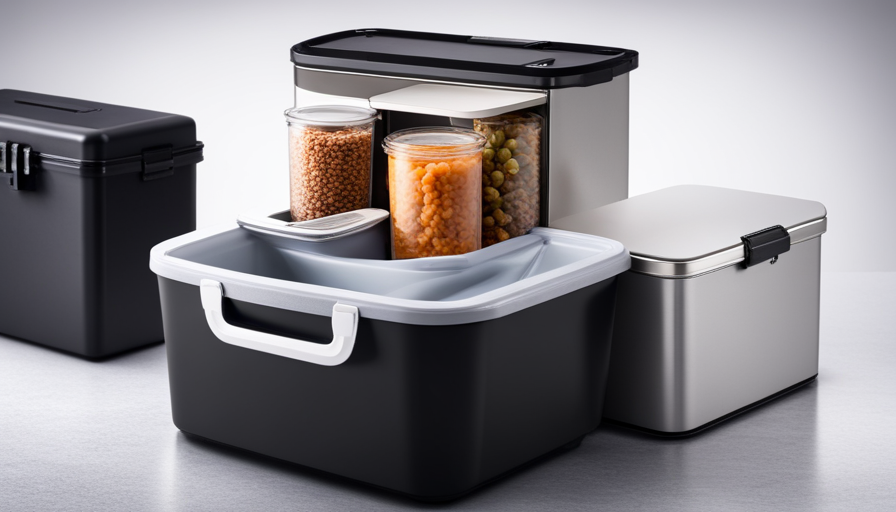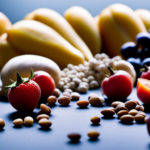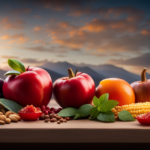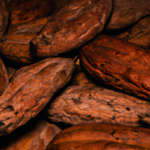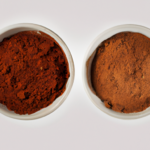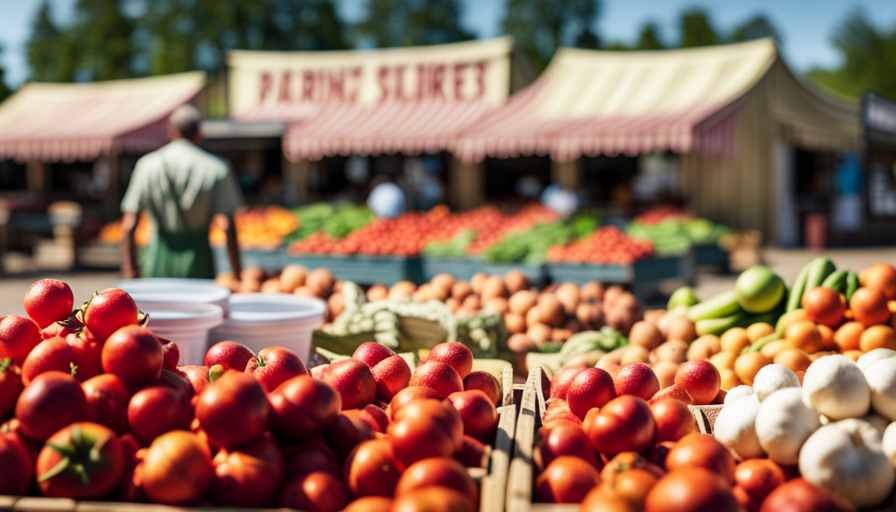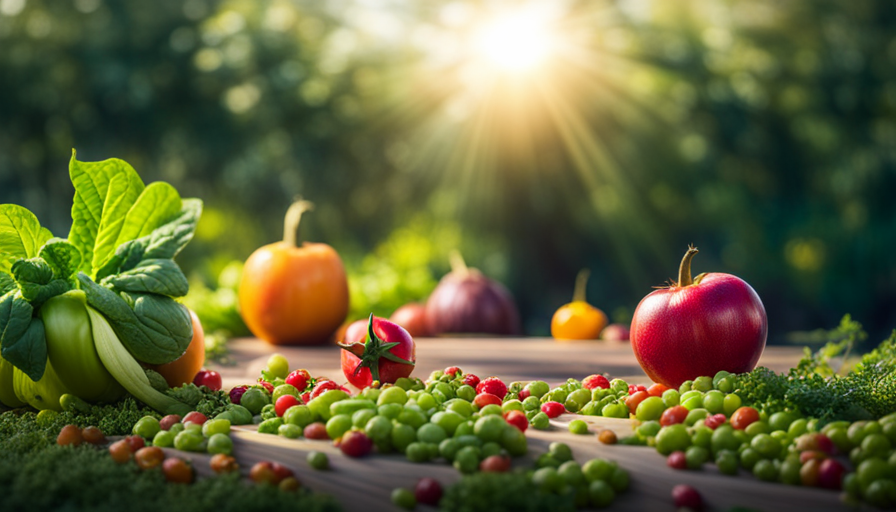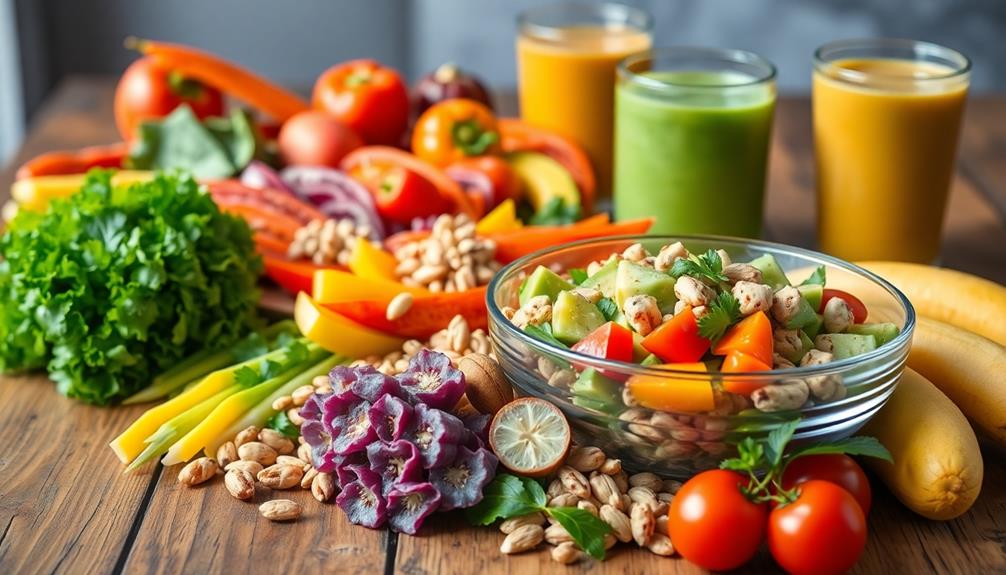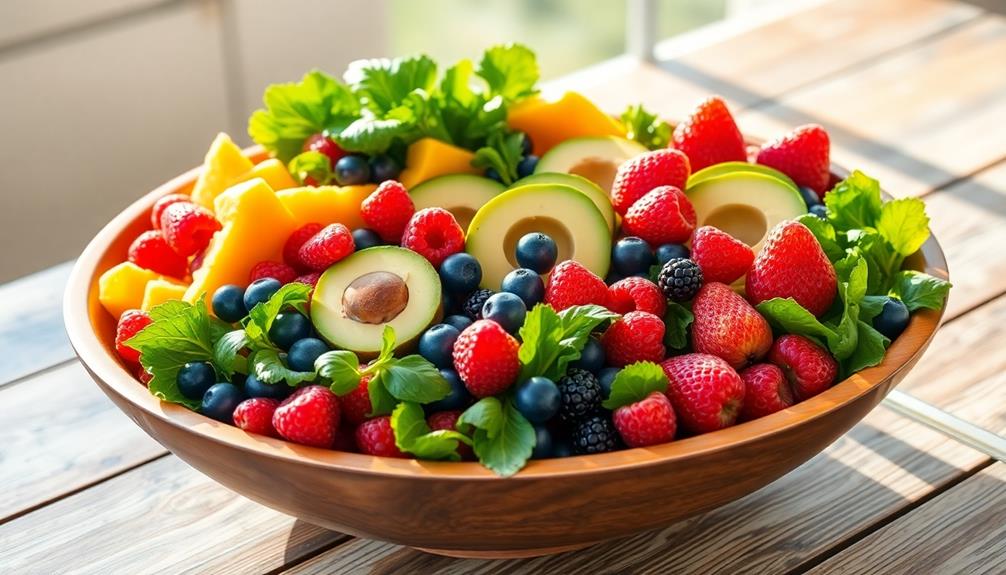In the food industry, there is a common saying that you are what you eat. This highlights the significance of processing raw materials to ensure the production of safe, high-quality food products that meet consumer demands and industry standards. Various techniques and procedures are utilized to transform raw ingredients into finished goods.
Processing raw products in the food industry serves numerous purposes. It enhances taste and flavor, improving the overall sensory experience of the end product. Texture and consistency are also optimized, providing consumers with a satisfying mouthfeel. Additionally, processing extends the shelf life of food products, reducing waste and allowing for convenient storage and distribution.
Moreover, processing raw products ensures food safety by eliminating harmful contaminants and pathogens. By adhering to industry standards and regulations, the food industry guarantees that the products reaching consumers are of the highest quality and meet stringent safety criteria.
In this article, we will explore in detail the various reasons why the processing of raw products is crucial in the food industry. From enhancing taste to complying with market trends, we will delve into the technical and research-based aspects of this essential practice.
Key Takeaways
- Processing enhances the taste, flavor, and texture of food products.
- Processing extends the shelf life of food products, reducing waste and enabling convenient storage and distribution.
- Processing ensures food safety by eliminating harmful contaminants and pathogens.
- Processing allows for customization and adaptation to meet consumer preferences and market trends.
Enhancing Taste and Flavor
Processing raw products in the food industry enhances taste and flavor, making them more delicious and appealing to consumers. One of the main reasons for processing raw products is to increase palatability. Palatability refers to the taste and flavor of a food and its ability to stimulate the senses in a pleasurable way.
By processing raw products, food manufacturers can add or enhance flavors, making the final product more enjoyable for consumers. Flavor enhancement is a key aspect of food processing. It involves the use of various techniques and ingredients to intensify existing flavors or create new ones. For example, spices, herbs, and seasonings can be added to enhance the taste of a dish. Additionally, techniques such as fermentation, smoking, and curing can be used to develop unique flavors in food products.
Moreover, processing raw products allows for the creation of different flavor profiles. By combining and manipulating ingredients, food manufacturers can produce a wide range of tastes and flavors to suit different consumer preferences. This versatility in flavor creation is an important aspect of the food industry, as it allows for the production of diverse and appealing products.
Moving on to the next section about improving texture and consistency, processing raw products also plays a crucial role in achieving these desired qualities in food products.
Improving Texture and Consistency
To achieve a delightful harmony of smoothness and firmness in your culinary creations, you’ll be whisking your ingredients into a symphony of flavors. However, taste is not the only aspect that determines the overall quality of a food product. Texture and consistency play a crucial role as well.
This is where the processing of raw products in the food industry comes into play. Improving texture and consistency is a key reason why raw products are processed in the food industry. Processing techniques such as grinding, blending, and emulsifying can help create a smooth and uniform texture in various food products. For example, the process of homogenization breaks down fat globules in milk, resulting in a creamy and consistent texture. Similarly, the use of food additives like stabilizers and thickeners can optimize the texture and consistency of products like sauces, dressings, and spreads.
Enhancing appearance and presentation is another aspect that can be achieved through processing. Techniques like cutting, slicing, and shaping can transform raw ingredients into visually appealing products. Additionally, processes like breading and frying can give food products a crispy and golden exterior, enhancing their overall appearance.
Furthermore, processing raw products can also optimize cooking and processing efficiency. By pre-processing ingredients, such as chopping vegetables or marinating meat, the overall cooking time can be reduced. This can be particularly beneficial in commercial food production where time is of the essence.
The processing of raw products in the food industry serves to improve texture and consistency, enhance appearance and presentation, and optimize cooking and processing efficiency. These factors work together to create a more enjoyable culinary experience. Moving forward, let’s explore how processing can also extend the shelf life of food products.
Extending Shelf Life
By extending the shelf life of our favorite culinary creations, we can savor their deliciousness for even longer periods. In the food industry, extending shelf life is crucial for increasing profitability and reducing food waste. Here are three ways in which processing raw products helps achieve this goal:
-
Modified Atmosphere Packaging (MAP): MAP involves altering the atmospheric composition inside food packaging to slow down spoilage. By replacing the oxygen with a mixture of gases, such as carbon dioxide and nitrogen, the growth of bacteria and fungi is inhibited, thereby extending the shelf life.
-
Pasteurization: This heat treatment process eliminates or reduces microorganisms that can cause food spoilage and illness. By subjecting raw products, such as milk or juices, to specific temperatures for a certain period, pathogens are destroyed, ensuring a longer shelf life.
-
Vacuum Packaging: Vacuum packaging removes air from the food package, creating a vacuum seal. This process helps prevent the growth of spoilage-causing microorganisms, as they require oxygen to survive. Vacuum packaging also reduces the risk of oxidation, which can lead to rancidity and flavor deterioration.
By implementing these techniques, the food industry can keep products fresh for longer, increasing profitability and reducing food waste. Ensuring food safety is the next crucial step in maintaining the integrity of our culinary delights.
Ensuring Food Safety
Make sure you’re taking the necessary steps to ensure the safety of your food. In the food industry, one of the main reasons for processing raw products is to prevent contamination and minimize spoilage.
Contamination can occur at any stage of the food production process, from raw materials to the final product. Processing raw products helps to eliminate or reduce the presence of harmful bacteria, viruses, parasites, and other microorganisms that can cause foodborne illnesses.
To ensure food safety, various techniques are employed during processing. These include heat treatment, such as pasteurization or sterilization, which kills or inactivates pathogens. Additionally, processes like canning, drying, and freezing help to extend the shelf life of food products by inhibiting the growth of spoilage-causing microorganisms. Furthermore, strict hygiene practices are followed at every stage of processing to prevent cross-contamination and maintain a clean environment.
By preventing contamination and minimizing spoilage, the food industry can provide consumers with safe and high-quality products. However, it’s important to note that processing alone may not completely eliminate all contaminants.
In the subsequent section about ‘removing harmful contaminants,’ we will explore additional steps taken to ensure the safety of processed foods.
Removing Harmful Contaminants
The food industry’s ongoing battle against harmful contaminants is akin to a relentless game of whack-a-mole, with each new threat requiring swift and strategic action. To ensure food safety, removing harmful contaminants is a crucial step in the processing of raw products.
This process is essential for reducing spoilage and minimizing waste, as well as protecting consumers from potential health risks. In order to achieve these goals, the food industry employs various methods to remove harmful contaminants. These methods include:
- Washing: Raw products are thoroughly washed to remove dirt, bacteria, and other contaminants that may be present on the surface.
- Filtering: Some raw products, such as juices or oils, undergo filtration processes to remove impurities and particles that can compromise the quality and safety of the final product.
- Pasteurization: This heat treatment process is used to kill harmful bacteria and pathogens, ensuring that the final product is safe for consumption.
- Chemical treatments: Certain chemicals, such as food-grade sanitizers, are used to disinfect raw products and eliminate harmful contaminants.
By implementing these techniques, the food industry can effectively reduce spoilage, minimize waste, and ensure the safety of the final product. This not only protects consumers but also contributes to a more sustainable and efficient food production system.
Transitioning into the subsequent section about ‘enriching nutritional value,’ the next step in the processing of raw products involves enhancing the nutritional content to provide consumers with healthier food options.
Enriching Nutritional Value
Enhancing the nutritional value of processed food is essential for providing consumers with healthier options. In the food industry, one of the reasons why raw products are processed is to increase their nutritional value. This is done through various methods such as fortification, enrichment, and supplementation.
One way to enhance the nutritional value of processed food is by fortifying it with essential vitamins and minerals. This is especially important in regions where certain nutrients are lacking in the diet. By adding these nutrients to processed foods, their accessibility and availability to consumers are increased, promoting better health outcomes.
Another method is through enrichment, where nutrients that may have been lost during processing are added back into the product. For example, whole grains can be milled into flour, but this process removes some of the nutrients. By enriching the flour with vitamins and minerals, the nutritional value is restored, providing consumers with a healthier option.
Supplementation is also used to enhance nutritional value. This involves adding beneficial ingredients such as omega-3 fatty acids or probiotics to processed foods. These additions promote sustainability by providing consumers with convenient and accessible sources of these nutrients.
Overall, enhancing the nutritional value of processed food is essential for promoting healthier options and increasing accessibility. By fortifying, enriching, and supplementing processed foods, consumers can have access to a wider range of nutrients, ultimately improving their overall health. Facilitating storage and distribution of these nutritious products is the next step in ensuring that consumers have easy access to them.
Facilitating Storage and Distribution
To ensure that consumers can easily access and enjoy nutritious processed foods, it’s crucial to streamline their storage and distribution processes. Optimizing packaging and streamlining the supply chain are key factors in achieving this goal.
-
Optimizing packaging: By using innovative packaging techniques, such as vacuum sealing or modified atmosphere packaging, the shelf life of processed foods can be extended. This helps to maintain the quality and freshness of the products, allowing consumers to enjoy them for a longer period of time.
-
Streamlining the supply chain: Efficient transportation and logistics are essential for the timely delivery of processed foods to consumers. This involves coordinating the movement of raw materials, intermediate products, and finished goods from the manufacturing facilities to distribution centers and retail stores. By minimizing delays and reducing wastage, the supply chain can be optimized to ensure that consumers have access to a wide variety of processed foods.
By optimizing packaging and streamlining the supply chain, the food industry can meet the demands of consumers for convenient and readily available processed foods. This includes ensuring that products are easily accessible in stores and online platforms, and that they are delivered in a timely manner.
Meeting Consumer Demands
In addition to facilitating storage and distribution, another important reason for processing raw products in the food industry is to meet consumer demands. As a food manufacturer, it’s crucial to understand and cater to the preferences of consumers.
People have different tastes, dietary restrictions, and cultural backgrounds, which means that a one-size-fits-all approach may not be suitable. Therefore, processing raw products allows us to provide customization options and adapt our products to specific consumer preferences.
By processing raw ingredients, we can create a wide range of products that cater to different tastes and dietary needs. For example, we can develop gluten-free alternatives for individuals with celiac disease or create low-sodium options for those watching their salt intake. Additionally, processing allows us to enhance the flavors, textures, and appearance of food, making it more appealing to consumers.
Furthermore, consumer preferences can change over time, influenced by factors such as health trends, cultural shifts, or environmental concerns. As a result, the food industry must constantly adapt to these market trends. By processing raw products, we can quickly respond to changing consumer demands and introduce new products that align with the latest trends.
Transitioning into the subsequent section about ‘adapting to market trends,’ it’s essential for food manufacturers to stay ahead of the curve and anticipate evolving consumer preferences.
Adapting to Market Trends
The food industry must constantly adapt to evolving consumer preferences, staying ahead of the curve and anticipating market trends. One important aspect of this adaptation is product innovation. By developing new and unique food products, companies can capture the attention of consumers and meet their changing demands.
This can involve creating healthier alternatives, introducing exotic flavors, or incorporating trendy ingredients. Market research plays a crucial role in identifying emerging trends and understanding consumer preferences. By analyzing data on consumer behavior, companies can tailor their marketing strategies to effectively promote their innovative products. This may involve targeted advertising campaigns, social media engagement, or collaborations with influencers.
Additionally, companies can leverage market trends to create strategic partnerships and expand their product offerings. For example, if there is a growing demand for plant-based products, a meat company may collaborate with a plant-based brand to develop a new line of products. By adapting to market trends and implementing effective marketing strategies, the food industry can effectively meet consumer demands and stay competitive in the market.
Transitioning into the subsequent section about complying with industry standards, it’s crucial for companies to ensure that their innovative products meet all necessary regulations and guidelines.
Complying with Industry Standards
One fascinating statistic that highlights the importance of complying with industry standards is that 48% of food recalls in the United States are due to undeclared allergens, posing serious health risks to consumers. Complying with industry standards is crucial in the food processing industry for several reasons.
Firstly, it ensures quality control throughout the production process. Industry standards provide guidelines and regulations that help food manufacturers maintain consistent quality in their products. By adhering to these standards, companies can implement effective quality control measures to prevent issues such as contamination, spoilage, or improper labeling. This not only protects the reputation of the company but also ensures the safety and satisfaction of consumers.
Secondly, complying with industry standards can be cost-effective in the long run. By following established guidelines and best practices, food processors can streamline their operations, minimize waste, and reduce the risk of recalls or legal actions. This helps companies avoid unnecessary expenses, such as product recalls, fines, or legal fees, which can significantly impact their profitability.
Complying with industry standards is of utmost importance in the food processing industry. It ensures quality control and helps companies maintain consistent product quality while also being cost-effective in the long run. By adhering to these standards, food manufacturers can protect the health and well-being of consumers and safeguard their own reputation and profitability.
Frequently Asked Questions
How does the processing of raw products in the food industry contribute to reducing food waste?
Reducing food waste through processing in the food industry is achieved in several ways. Firstly, processing enables the utilization of imperfect or surplus raw materials that would otherwise go to waste. By transforming these ingredients into processed foods, their shelf life is extended, reducing the likelihood of spoilage and waste.
Additionally, processing techniques such as canning, freezing, and drying preserve the nutritional value of raw products, ensuring that they remain safe and nutritious for longer periods of time.
What are some common methods used in the food industry to remove harmful contaminants from raw products?
In the food industry, various methods are employed to efficiently remove harmful contaminants from raw products. One interesting statistic is that the use of physical methods, such as washing and scrubbing, can eliminate up to 99% of bacteria from produce.
Additionally, thermal treatments like pasteurization can destroy pathogens in liquid products. The adoption of these methods ensures the safety and quality of processed food, reducing the risk of foodborne illnesses and promoting consumer trust in the industry.
How does the processing of raw products help to meet the specific dietary needs of different consumer groups?
Processing raw products in the food industry plays a crucial role in meeting the specific dietary needs of different consumer groups. By modifying the composition, texture, and flavor of raw products, the food industry can cater to diverse nutritional requirements.
Furthermore, processing allows for the addition of essential vitamins and minerals, enhancing the nutritional value of the final product. Additionally, consumer preferences, such as convenience and taste, can be met through processing techniques like canning, freezing, and packaging, thereby ensuring a wider range of food choices for individuals with varying dietary needs.
Can you provide examples of how the processing of raw products in the food industry adapts to changing consumer preferences?
Adapting to consumer preferences is essential in the food industry. One example of innovative processing methods is the rise of plant-based meat alternatives. As consumers increasingly prioritize sustainability and health, companies have developed processing techniques to create plant-based products that closely resemble the taste and texture of traditional meat.
This allows consumers to enjoy their favorite dishes while aligning with their dietary preferences. Such adaptations demonstrate the industry’s commitment to meeting changing consumer demands through advanced processing techniques.
What are some industry standards that food processors need to comply with to ensure the quality and safety of their products?
Industry standards play a crucial role in ensuring the quality and safety of food products. Food processors must comply with various regulations and guidelines to meet these standards. These standards encompass areas such as ingredient sourcing, manufacturing processes, packaging, labeling, and storage.
By adhering to these standards, food processors can minimize the risk of contamination, maintain consistent product quality, and ensure consumer safety. Rigorous inspections and audits help enforce compliance and guarantee that the highest food safety standards are upheld throughout the processing of raw products in the food industry.
How does the processing of raw products in the food industry affect food safety and storage?
The raw meat refrigerator placement is critical in the food industry as it directly impacts food safety and storage. Improper storage of raw meat can lead to cross-contamination and the spread of harmful bacteria. Proper processing and storage of raw products are essential for ensuring the safety and quality of food products.
Conclusion
In conclusion, the processing of raw products in the food industry is essential for enhancing taste and improving texture. It also helps in extending shelf life, ensuring food safety, and removing harmful contaminants. Additionally, processing facilitates storage and distribution, meets consumer demands, and adapts to market trends. Moreover, it helps in complying with industry standards. Through carefully controlled processes, food manufacturers are able to create products that not only meet the highest quality standards but also evoke a sense of satisfaction and delight in consumers.
By employing cutting-edge technology and adhering to strict guidelines, the food industry continues to evolve and deliver products that exceed expectations.


